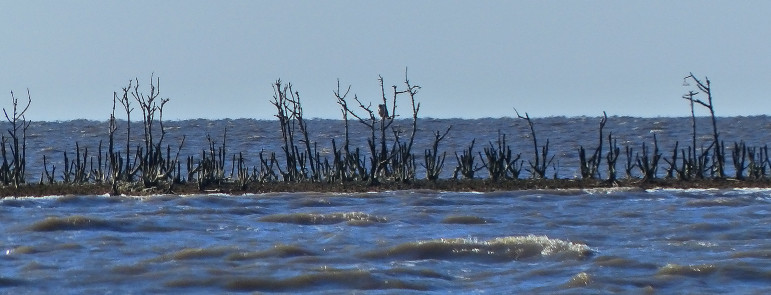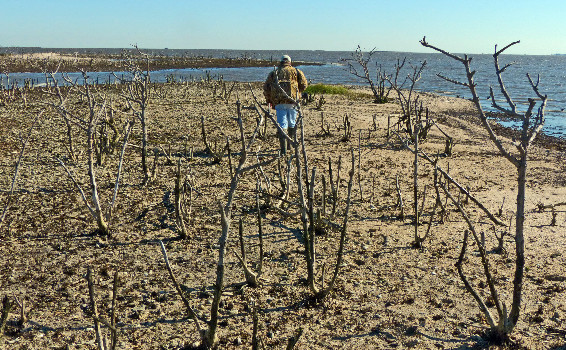
This spring, P.J. Hahn pleaded with the Legislature and the Coastal Protection and Restoration Authority to provide the remaining $3 million of the $6.5 million he needs to rebuild a Cat Island pelican rookery destroyed by BP’s oil spill.
He went home with empty pockets.
But the director of Plaquemines Parish’s Coastal Zone Management Department has decided to start the project anyway. He hopes his actions will be more convincing than his words.
“We figure once people see us actually building this thing, the rest of the money will start to come in,” Hahn said.
He said his decision isn’t based on hope alone; it’s a necessity.
“We’re at the point where we will start losing some of the $3 million we’ve been sitting on for the last four years if we don’t use it,” he said. “And some of the bird biologists are concerned that if we lose another nesting season, some of those birds will never come back.
“So, really, we’ve got no choice but to start, and keep beating the drums.”

Hahn has been beating these drums since oil from the Deepwater Horizon flowed into eastern Barataria Bay in the spring of 2010, coating the roots of the mangrove bushes that held the islands together.
Within two years, most of those plants had died, and a fatal erosion process that would have taken 10 years was finished in four. What had been the nesting site for tens of thousands of pelicans, roseate spoonbills, ibis, herons, terns and many other birds is now open water.
Hahn put together a plan to rebuild one of the islands. Riprap would be placed in the outline of a 21-acre island, and sand and mud would be barged in from the Mississippi River to fill the interior several feet above sea level. Mangrove and grass plantings would follow, giving the birds a chance to return after losing only two nesting seasons.
The original estimated cost was $5 million. Hahn quickly raised $3.5 million:
-
$1 million from Shell Oil Co.
-
$1.5 million from the state’s Coastal Impact Assistance Program
-
$500,000 from the American Bird Conservancy
-
$500,000 from Plaquemines Parish
But he came up empty when he sought money from the federal government’s post-spill assistance programs, the Legislature and the state Coastal Protection and Restoration Authority.
“The Legislature was a no-go, and CPRA said the funds they have are already committed to other projects, and can’t be shifted,” Hahn said.
That bad news was followed by even more. Engineers have told Hahn that the cost has now risen to about $6 million because continued erosion has made the job even larger.
Yet Hahn still sees possibilities.
He pointed out that the RESTORE Act, which spells out how BP oil spill money will be spent, earmarks substantial funding for projects by Gulf Coast coastal parishes and counties. But he would not be able to get that money for a year or more because the lawsuit to establish how much money BP will pay is ongoing.
And while Hahn is optimistic that the state coastal authority will match any new funding he comes up with, that agency’s executive director, Kyle Graham, was careful to point out that his agency hasn’t committed to anything.
“We have not pledged a match but have indicated a willingness to work with Parishes to match funds where possible and appropriate. A similar approach was taken with CIAP, the Coastal Impact Assistance Program,” Graham said in an email. “The goal is to stretch the resources as far as possible. There are no set rules but an offer to listen.”
Although Hahn admitted those funding possibilities are less than definitive, he said he can’t wait to find out.
“The groups that gave us the money can’t let it sit around doing nothing any longer – and if we wait longer, we’re afraid the birds may not come back,” he explained.
He expects the engineering and design team to be ready to bid the job within two months. A month later the contractor should be chosen, and construction should commence by October.
“There’s enough money now to put the rocks down and fill in about 200 yards from the rocks toward the interior,” Hahn said. “And once people actually see this thing coming to life, I think the rest of the money will start coming in.
“I’ve just got to believe people are not going to let this thing die. They’re going to come and help.”


